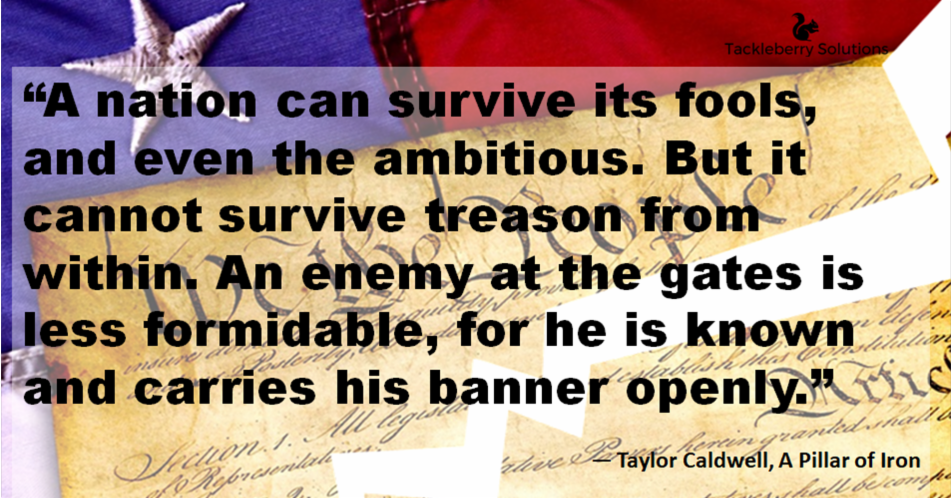
A stationary guard's primary mission is to work as an early warning system to activate the Quick Reaction Force in order to stop an invasion from the enemy.
Stationary Guards During Wartime
A stationary guard is basically the guy(s) that are positioned in a strategic and/or tactical advantage point. They are there to observe everything that is coming towards the neighborhood/community.
Using Fox Holes with Your Stationary Guards
Fox holes are: A hole that is dug down into the ground and is approximately 8 feet in diameter. You want to be able to lie down in the hole. And use the dirt you dug up to fortify your position with.
They are used for: long term fighting positions and long term guard positions.
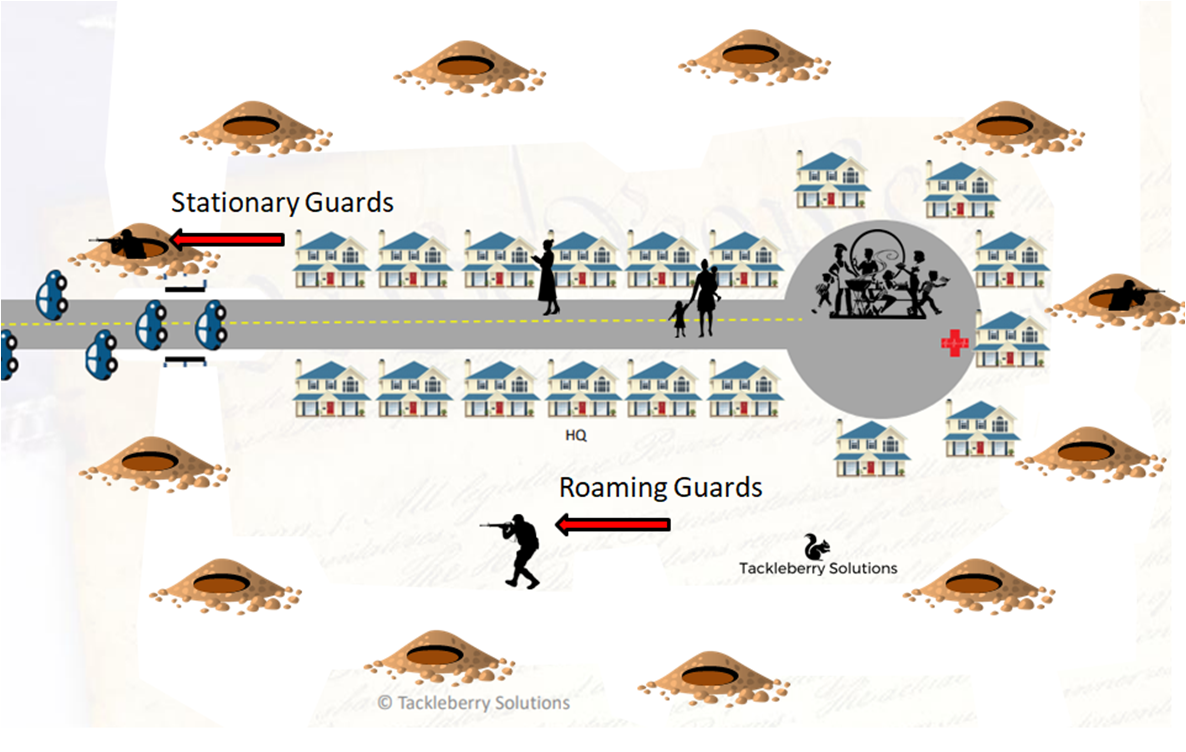
Also don't forget camouflage. Pulling foliage from behind your position can aid you in this.
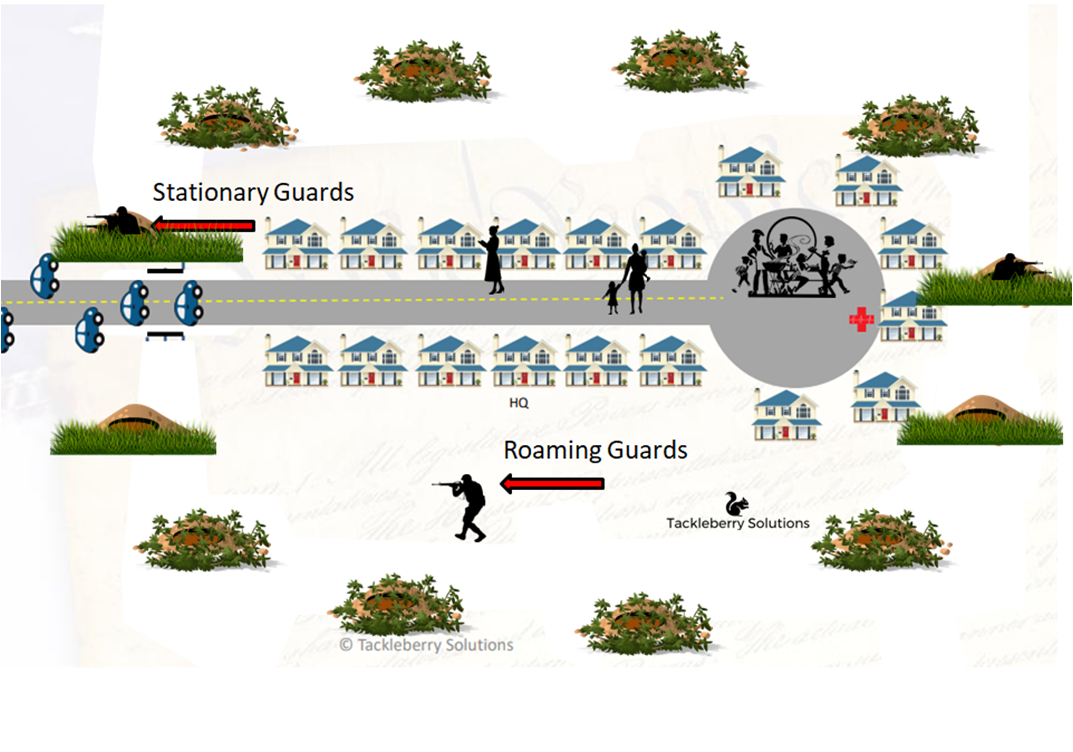
Side Note: Fox holes trump towers every time when it comes to stationary guard points. Foxes holes are easier to hide and offer a better advantage of surprise.
The Clock Method
It is important to label your guard positions so that you can call out areas of contact when your are under attack. For example, a stationary guard can call out, "Contact tower 12." This way everyone knows where to go in order to provide aid quickly.
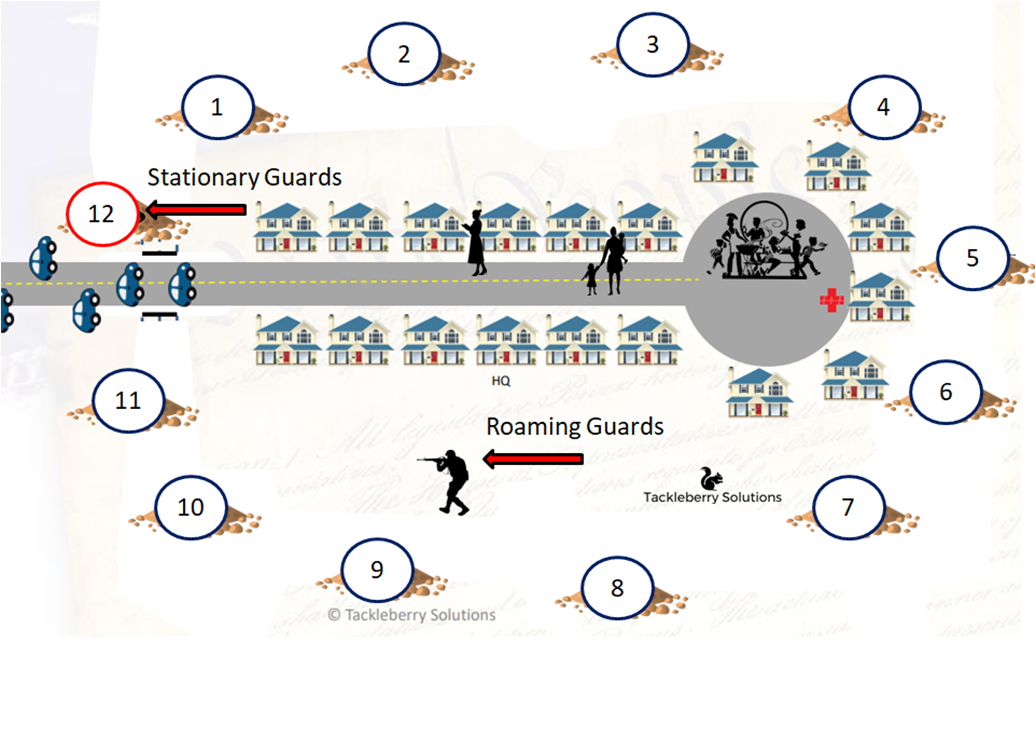
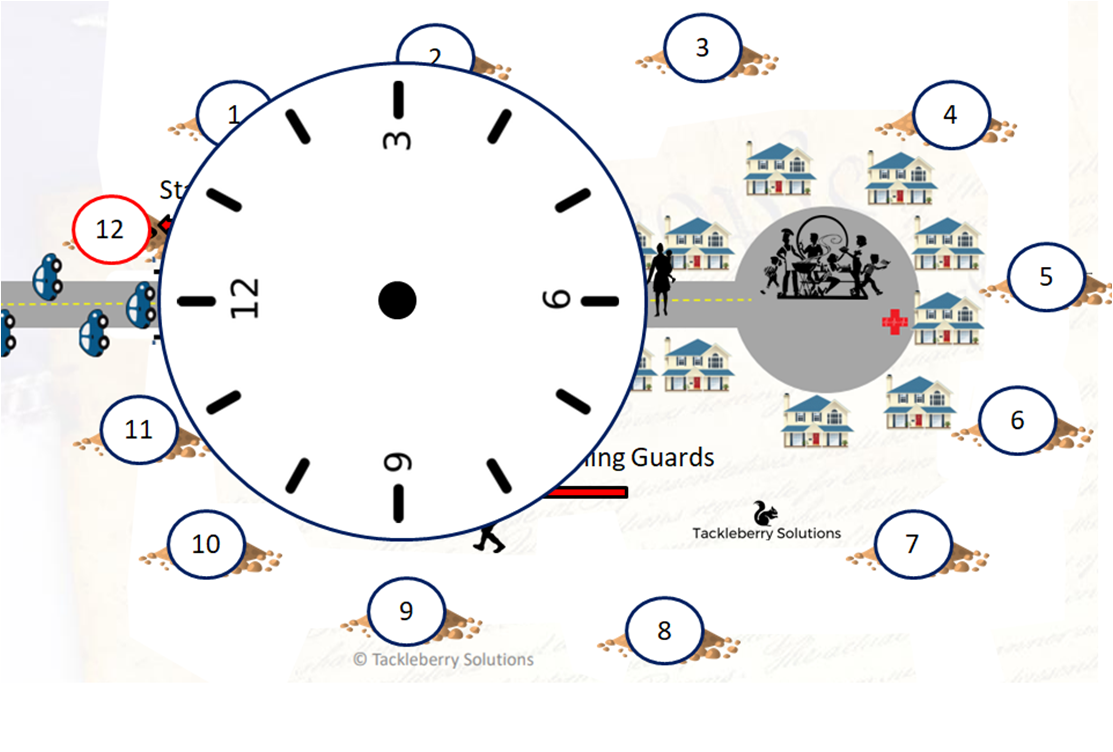
By positioning your stationary guards in this manner, it also allows more than one fox hole the ability to react to the same threat at the same time (pictured below.)
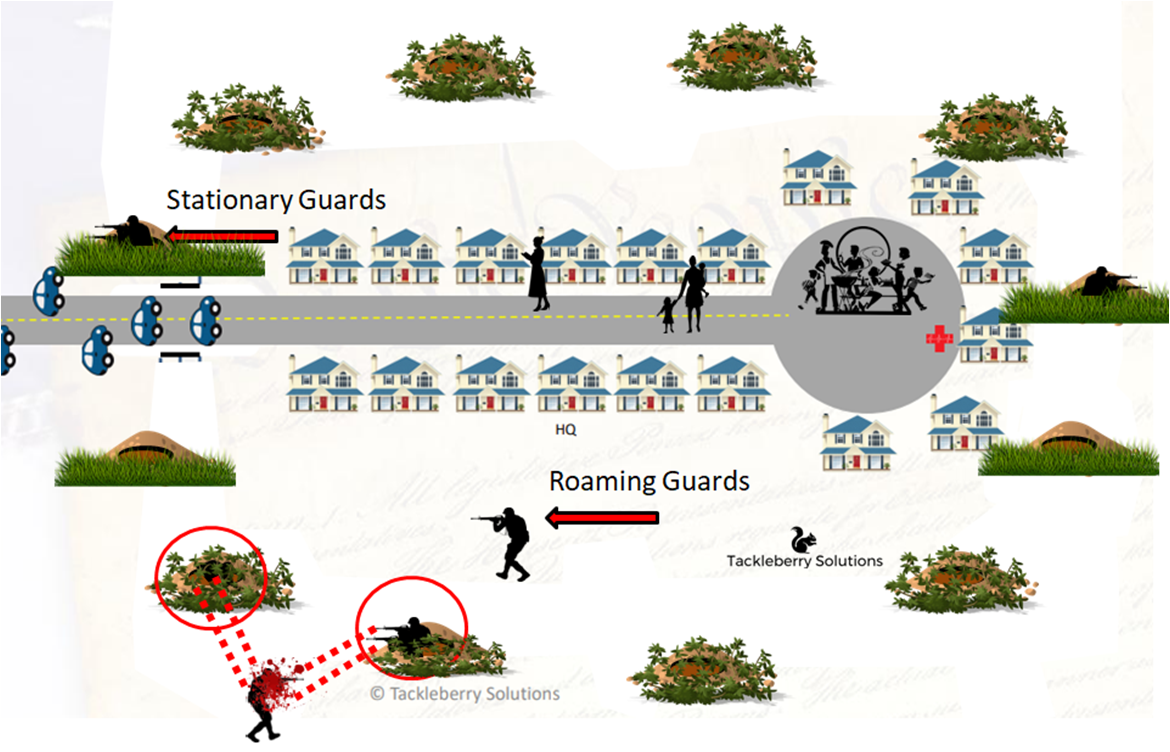
Using Towers or Vehicles
Your stationary guards would use a tower or vehicles if the layout of the land makes it hard to hide fox holes or your position is already well known. If everyone already knows you are there, you might as well elevate your guard positions so that you can see further out. You can also further secure your perimeter by adding barbed and electrified fencing (when assets allow.)
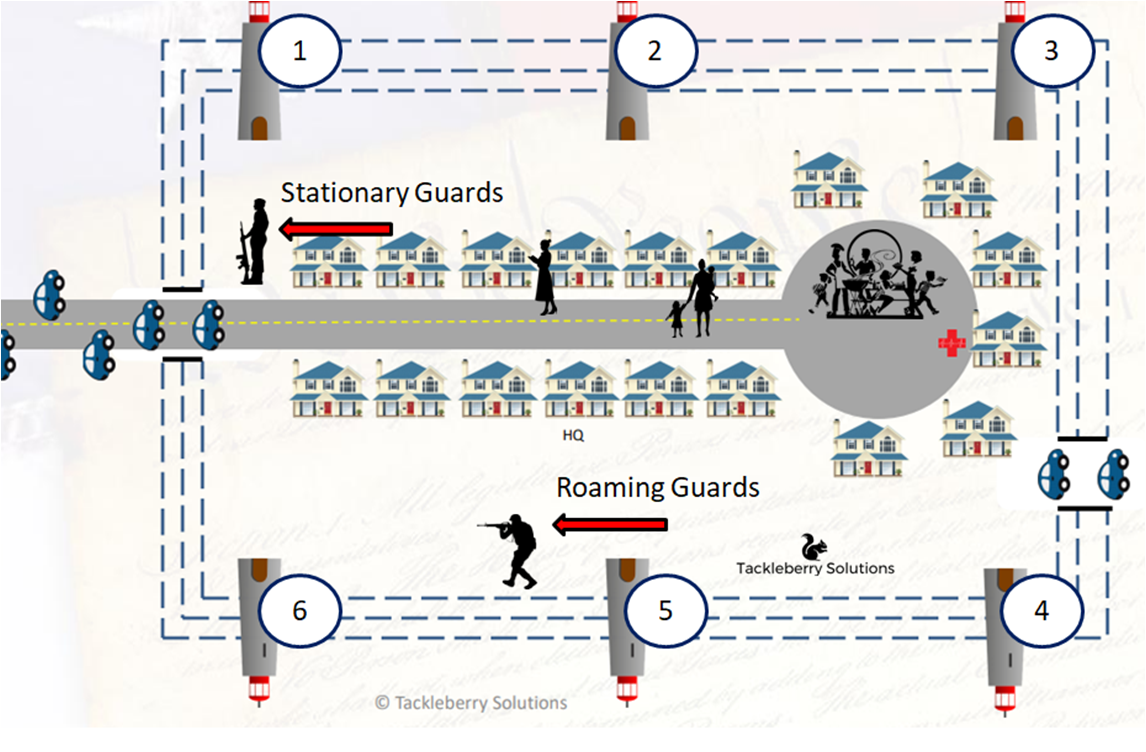
Fence Distances
The first fence is going to be as close as possible to your stationary guard points. The next one is going to be 4 - 10 feet apart. The third fence will have the greatest distance of 10 - 15 apart. The first two fences are the ones that you are going to electrify (if possible.) The third fence (the one on the outside) will be the easiest to breach. This enables your enemy to set themselves up for that fatal funnel (pictured below.)
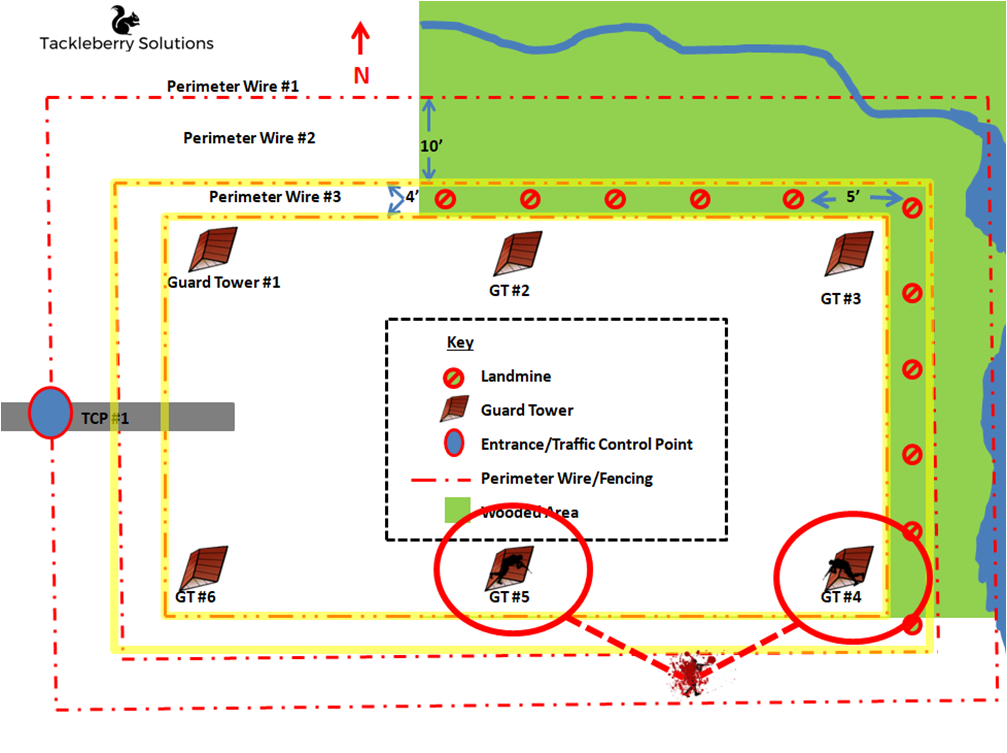
Traffic Control Points
Your guard positions will also have to cover TCPs to secure entrances and exits into the community/neighborhood.
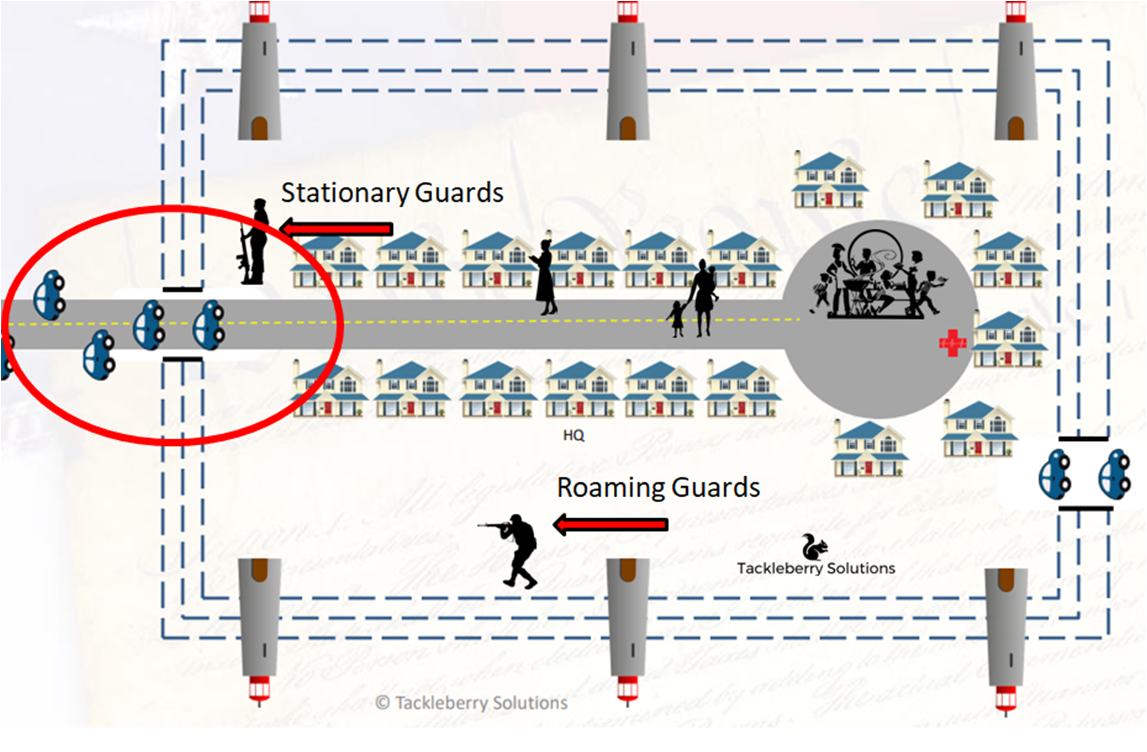
I highly recommend you have at least two TCPs. One main entrance and a back way out as a secondary emergency exit.
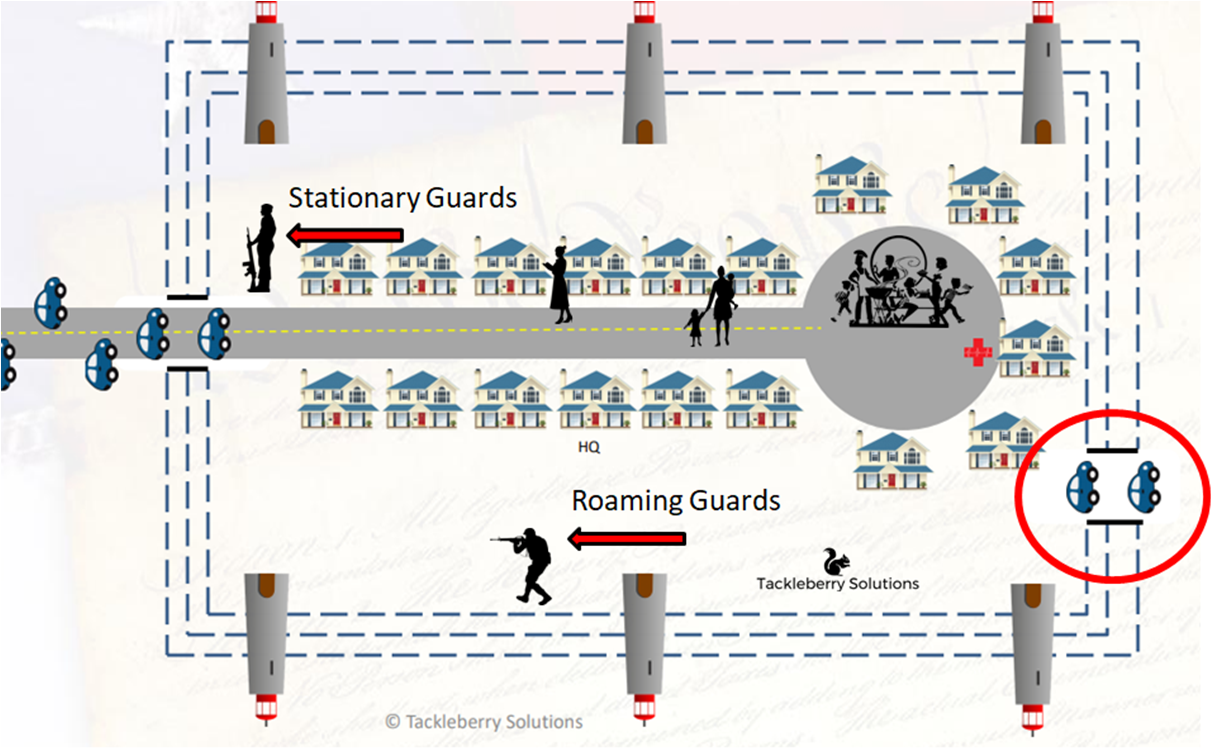
The American Revolution
Prepare for War. Pray for Peace.
As you can see, a set up like this takes a lot of work and pre-planning. Even if you don't intend on setting up your stationary guard points until war actually hits, you're still going to need the supplies on hand to do so. The time to prepare for war is not when war strikes. It is now!
At Tackleberry Solutions, I teach WARTIME tactics. I've literally taken the gloves off and provided everything you need to know about taking on a trained army with limited assets and resources. Many of these tactics were not only taught in special forces, but were created by me through raw experience. You WILL NOT find this type of information anywhere else.
I suggest you start with my printed book, "Improvised Explosives." In it I teach you how to make your own frags, claymores, landmines and more using common household items. Not to mention a few tactical tips at the end on how to fight a force larger than your own.
There is no digital copy of this information. The only way to get it, is to have it mailed directly to your door.



